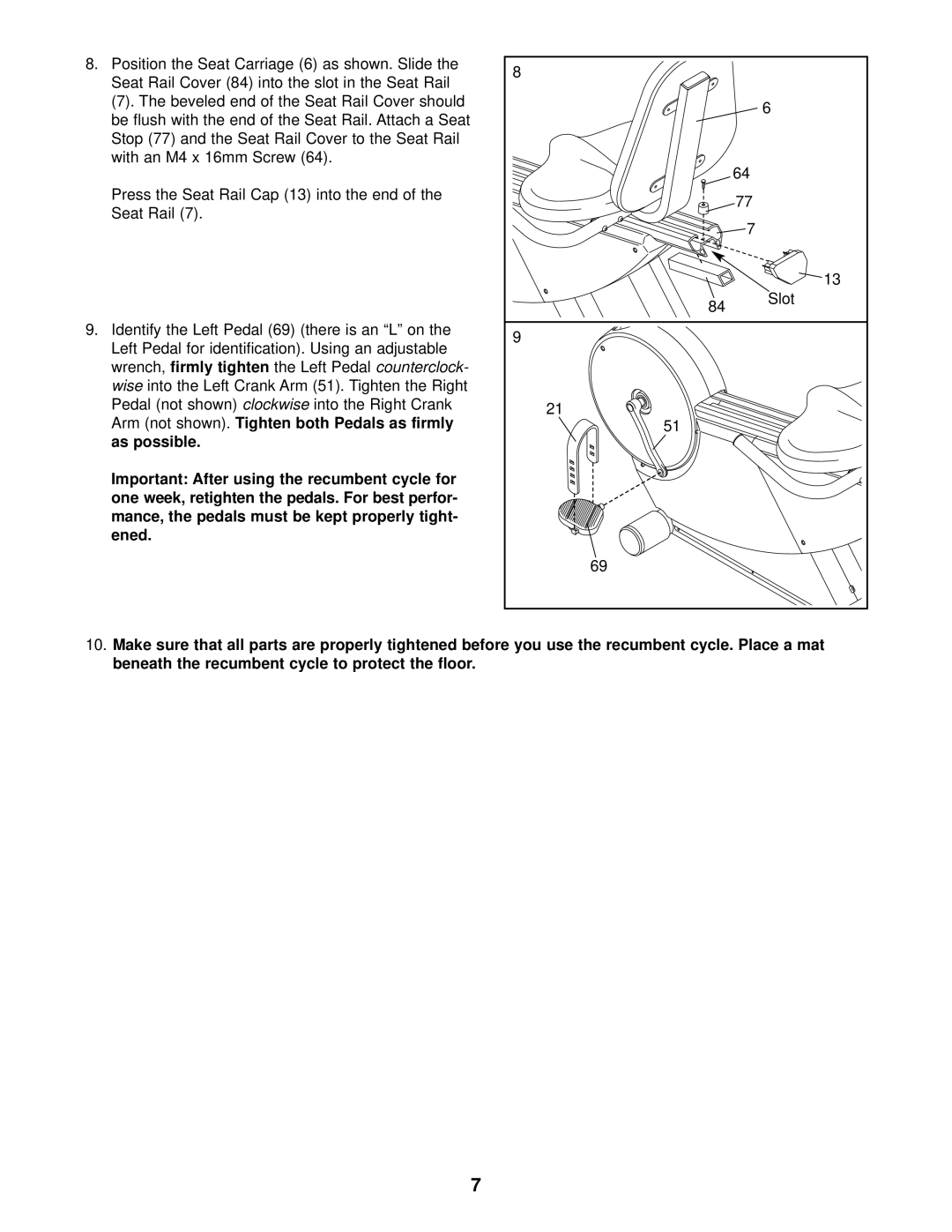
8. Position the Seat Carriage (6) as shown. Slide the | 8 |
|
Seat Rail Cover (84) into the slot in the Seat Rail |
| |
|
| |
(7). The beveled end of the Seat Rail Cover should |
| 6 |
be flush with the end of the Seat Rail. Attach a Seat |
| |
|
| |
Stop (77) and the Seat Rail Cover to the Seat Rail |
|
|
with an M4 x 16mm Screw (64). |
| 64 |
|
| |
Press the Seat Rail Cap (13) into the end of the |
| 77 |
Seat Rail (7). |
| |
| 7 | |
|
| |
|
| 13 |
| 84 | Slot |
|
| |
9. Identify the Left Pedal (69) (there is an “L” on the | 9 |
|
Left Pedal for identification). Using an adjustable |
| |
|
| |
wrench, firmly tighten the Left Pedal counterclock- |
|
|
wise into the Left Crank Arm (51). Tighten the Right |
|
|
Pedal (not shown) clockwise into the Right Crank | 21 |
|
Arm (not shown). Tighten both Pedals as firmly |
| |
51 |
| |
as possible. |
|
|
Important: After using the recumbent cycle for |
|
|
one week, retighten the pedals. For best perfor- |
|
|
mance, the pedals must be kept properly tight- |
|
|
ened. |
|
|
| 69 |
|
10.Make sure that all parts are properly tightened before you use the recumbent cycle. Place a mat beneath the recumbent cycle to protect the floor.
7
